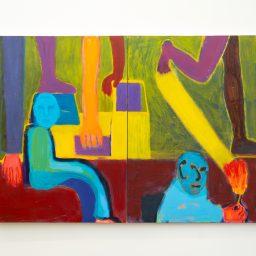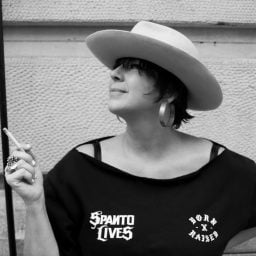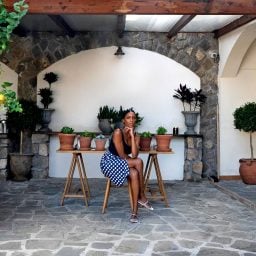Itinerant fair Paris Internationale’s ninth edition opened this week in a 1920s former telephone exchange building in the central Grands Boulevards area. Freshly gutted, the edifice will soon be renovated by a property developer. The walls are raw and peppered by orange tape, and fair-goers need to mind their step. This edginess is what visitors have come to expect from the nomadic fair that has popped up in locations as diverse as dilapidated townhouses and a newspaper’s old carpark. This year, 65 galleries and five non-profit spaces are exhibiting across five floors, up from 60 galleries last year.
“[Belgian fashion designer] Dries Van Noten held his fashion show here last month,” said Silvia Ammon, who has been Paris Internationale’s director since its inception in 2015. Ammon was joined in the event’s second year by Clément Delépine, who served as co-director from 2016-2020. After an interim stint working at JGM Galerie owned by Jean-Gabriel Mitterrand, Delépine became director of Paris+ last year. Paris Internationale did not replace Delépine; instead, Ammon held tightly onto the reins.
The fair launched when former rival fair Slick, an alternative to FIAC (France’s now defunct international contemporary art fair), was wearing thin. Slick’s 10 editions ran from 2006-2015; Paris Internationale and Slick overlapped for one year. Subsequently, Paris Internationale became the main event for emerging galleries too young for FIAC. Since Art Basel ousted FIAC after winning the Grand Palais’ covetable October slot, Paris Internationale has been sharing dates with Paris+ par Art Basel instead.
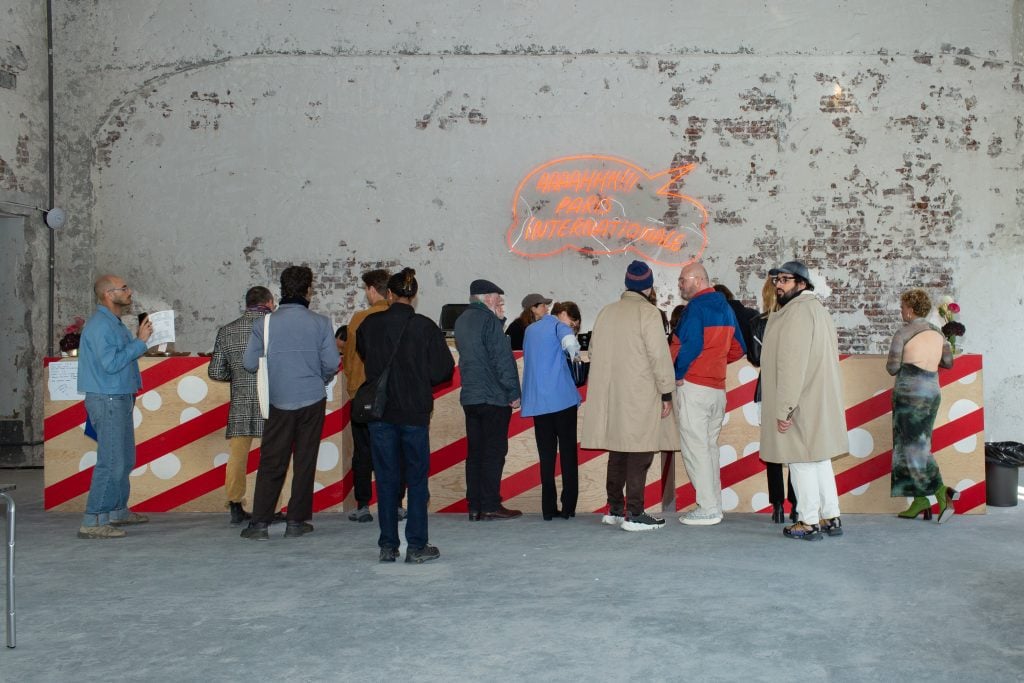
Paris Internationale 2023. © Margot Montigny
Although some might wonder if Paris Internationale is unsettled by Paris+ par Art Basel’s arrival, Ammon is adamant that the former’s collegial identity is key to its success. “It’s a project that was created from the heart—a fair by galleries for galleries so they could have a platform for our generation,” she said. “Since then, the project has evolved and become multi-generational.”
The fair was founded by five galleries: Crèvecoeur (Paris), Gregor Staiger (Zurich/Milan), Ciaccia Levi (Paris/Milan), Sultana (Paris) and High Art (Paris). High Art left after the 2017 edition in order to participate in FIAC, and Sultana followed suit after the 2020 edition. Both galleries are now at Paris+ currently at the Grand Palais Éphémère; Paris+ will hold its first edition at the Grand Palais next year following the building’s renovations.
Permeability between Paris Internationale, FIAC in its time, and now Paris+ has long existed, with galleries sometimes graduating to the bigger fair as they grow. Felix Gaudlitz, LC Queisser and Galeria Stereo participated in Paris Internationale last year but are at Paris+ this year.
“We left Paris Internationale with regret because we like the fair and its ambience a lot,” Philippe Joppin, co-director at High Art, explained. “[But] the fact that we were founders gave us an enormous, time-consuming workload in terms of following the fair’s production and organization, and we wanted to continue to evolve in less young fairs in order to show more established artists.”
Guillaume Sultana also left because his eponymous gallery “needed a change” and because he wanted to leave place for younger galleries to participate. “The gallery and our artists were evolving, and showing in a more official fair [FIAC] gave a different status,” Sultana said. His decision was also influenced by his gallery moving from Belleville to the central Beaubourg district.
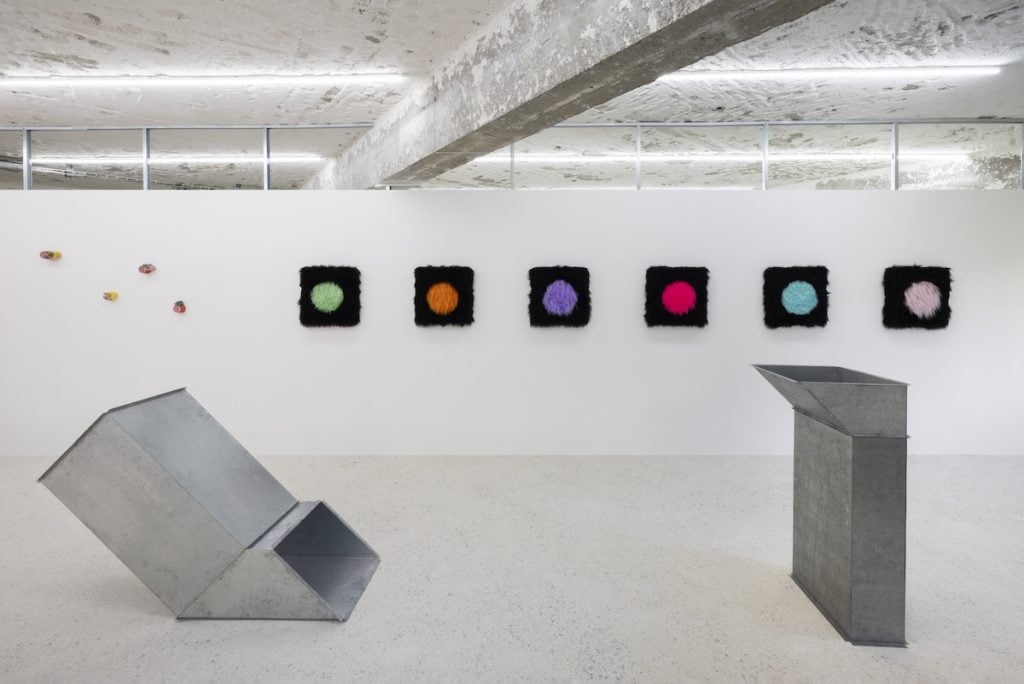
Mehdi Chouakri at Paris Internationale, 2023. Courtesy: Sylvie Fleury, Geneva, the Estate of Charlotte Posenenske, Berlin and Mehdi Chouakri, Berlin. Photo: Andrea Rossetti.
By contrast, Ciaccia Levi decided to stay put at Paris Internationale. “At the beginning, we decided to launch Paris Internationale because FIAC didn’t have space for everybody, especially young galleries of our generation,” the gallery’s co-founder Nerina Ciaccia, who exhibited last week at Frieze Masters, said. “Now we continue to be here because we’ve grown with the fair. Increasingly, more institutions come and it’s one of the fairs where we meet the most museums and curators.”
This back-and-forth can happen in the other direction, too. A surprise at this edition is Berlin’s Mehdi Chouakri, who participates in Art Basel. However, his application to Paris+ was rejected so he applied to Paris Internationale.
“I thought that I might be too established for Paris Internationale but they were happy to welcome me,” said Chouakri. “Being here is really good and brings a totally different way of working because we can experiment, do projects more lightly than at a fair like Paris+, and present more accessible works.” He has sold one of Sylvie Fleury’s Cuddly Dot paintings in fake fur, priced at €24,000 ($25,395), a red Escape neon by Fleury, and a galvanized steel sculpture by Charlotte Posenenske.
When asked if he would re-apply to Paris+ next year when the fair moves to the Grand Palais, Choukari said, “I guess so, yes… We would try to do Paris Internationale as well because I like this less corporate format.”
House of Gaga from Mexico City also applied to Paris Internationale after being turned down by Paris+. “We exhibited for 10 years at FIAC until its last edition, and this is our first time at Paris Internationale as we were ‘wait-listed’ at Paris+,” said gallery director Gabriela Magaña. “We’re really loving this fair—its energy, the refreshing proposals, and the organizers. It’s heartwarming.”
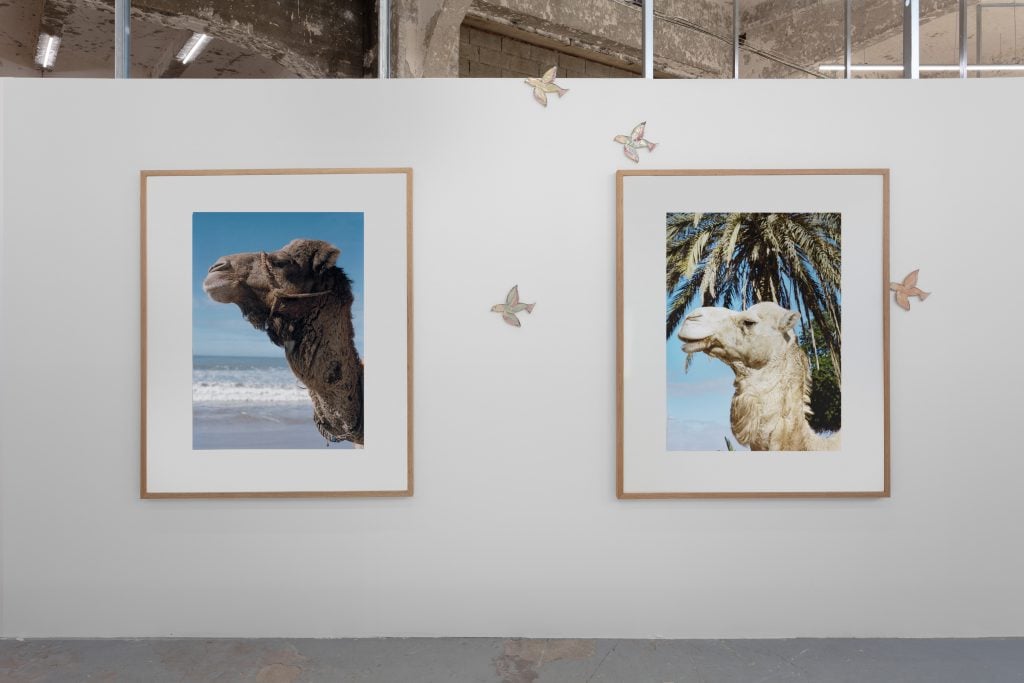
Marc Camille Chaimowicz’s bird ceramics and rugs alongside German-Korean photographer Heji Shin’s portraits of camels at House of Gaga’s stand. Photo: Courtesy of House of Gaga.
On view at the gallery’s booth is a duo show juxtaposing Marc Camille Chaimowicz’s bird ceramics, made under Covid pandemic’s lockdowns, and rugs alongside German-Korean photographer Heji Shin’s portraits of camels at a Moroccan beach. Magaña sold seven from the set of 48 of Chaimowicz’s ceramics at the preview.
Like House of Gaga, galleries have traveled far and wide to exhibit at this year’s edition. A sixth of them are from Asia, including Beijing’s Magician Space which sold its installation by Hu Yingping, priced €110,000 ($116,000), at the preview. It features over a dozen knitted bikinis encased in plastic that are suspended in the space. The artist created a company to purchase knitted garments made by local women for a project initiated in 2015. “We’re trying to get connections around the world because during the pandemic China was blocked [internationally],” Pojan Huang, a researcher and assistant at Magician Space, said about the gallery’s participation in Paris Internationale.
Inevitably, a prevailing question is how Paris Internationale might be impacted by Paris+ moving next year to the Grand Palais where it will have a much larger floor plan. This will provide Delépine with the opportunity to invite more emerging galleries to participate.
Axel Dibie, who co-owns of Crèvecoeur with Alix Dionot-Morani, is robust on this topic. “Certainly, Paris+ par Art Basel will have more exhibitors but we also have more exhibitors as Paris Internationale is expanding,” he said. “We’re delighted that Paris+ is moving to the Grand Palais because what’s good for Paris+ is, by extension, good for Paris Internationale. The two fairs are complementary, Paris Internationale is inter-generational, and everybody is pulling Paris upwards.” At the preview, Crèvecoeur sold all of its paintings by Japanese artist Yu Nishimura, priced between €4,000 and €60,000 ($4,232 and $63,482), which are part of the gallery’s group presentation.
Still, Staiger admitted that Paris Internationale was “discussing strategies” ahead of the relocation of Paris+ to the Grand Palais next year and that if there was any competition, it was friendly competition.
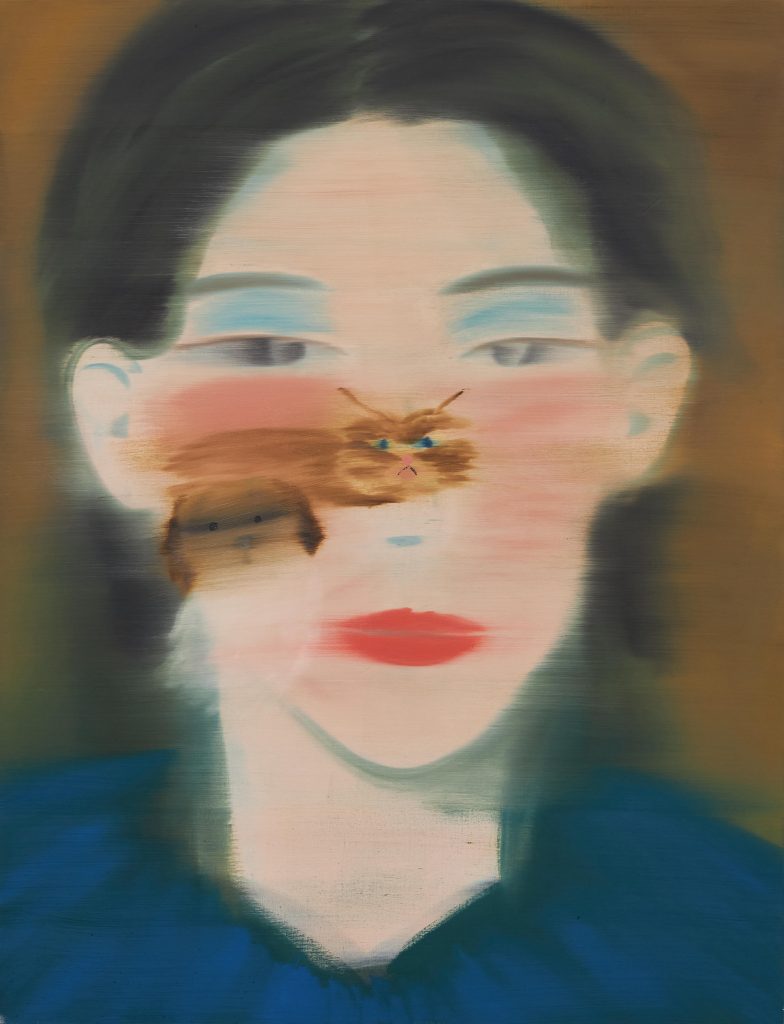
Yu Nishimura, gaze (2023). Courtesy of the artist and Crèvecoeur, Paris. Photo: Alex Kostromin.
Several exhibitors, past and present, voiced support for Paris Internationale’s future. “I think the fair has such a well-defined identity and well-executed vision that it will continue to attract sufficient exhibitors regardless of competition,” said Todd Von Ammon from Washington D.C., who has participated in the fair for three years. He finds its “rough-and-ready, egalitarian ethos” to be a good fit for his gallery.
“I don’t consider it to be a satellite fair per se as it continues to be the right choice for some of the world’s most well-respected and serious small galleries,” added Von Ammon. He has sold several works, priced $18,000, from Dinos Chapman’s “Disastrous Moments” series (2023), for which Chapman reworked etchings from Goya’s “The Disasters of War” series with watercolor and graphite based on kitsch figurines from an American gift brand.
Meanwhile, Robbie Fitzpatrick, who participated in Paris Internationale in 2020 because FIAC was cancelled said that different fairs were necessary. “There’s a natural comparison between what Liste is to Art Basel and what Paris Internationale is to Paris+ and was previously to FIAC,” said Fitzpatrick, who exhibited at FIAC for several years and is now at Paris+. “The vibrant energy of these fairs, which were both initiated by young galleries, is imperative for a fair ecosystem to flourish.
Fitzpatrick added: “One of the most appealing aspects of Paris Internationale’s model, which Basel Social Club has emulated, is its itinerant nature of the project [which keeps it] fresh with each edition.”
More Trending Stories
The World’s Most Popular Painter Sent His Followers After Me Because He Didn’t Like a Review of His Work. Here’s What I Learned
Archaeologists Excavating the Tomb of Egypt’s First Female Pharaoh Found Hundreds of Jars Still Holding Remnants of Wine
The Second Paris+ Started With a Bang. Could Art Basel’s New Venture Unseat Its Flagship Fair One Day?
Is There a UFO in That Renaissance Painting? See 7 Historical Artworks That (Possibly) Depict Close Encounters With the Third Kind
A Glasgow Museum Reveals a $3.7 Million Rodin Sculpture Has Been Missing From Its Collection for Nearly 75 Years
What I Buy and Why: Art Entrepreneur Hélène Nguyen-Ban on Her Original ‘Art Crush’ and Owning a Half-Ton Book by Anselm Kiefer
Christie’s 20th/21st Century Evening Sale Notches Steady Results, a Feat in the Current Tepid Art Market
Four ‘Excellently Preserved’ Ancient Roman Swords Have Been Found in the Judean Desert
An Early Edition of an ‘Unhinged’ Christopher Columbus Letter Outlining What He Discovered in America Could Fetch $1.5 Million at Auction







